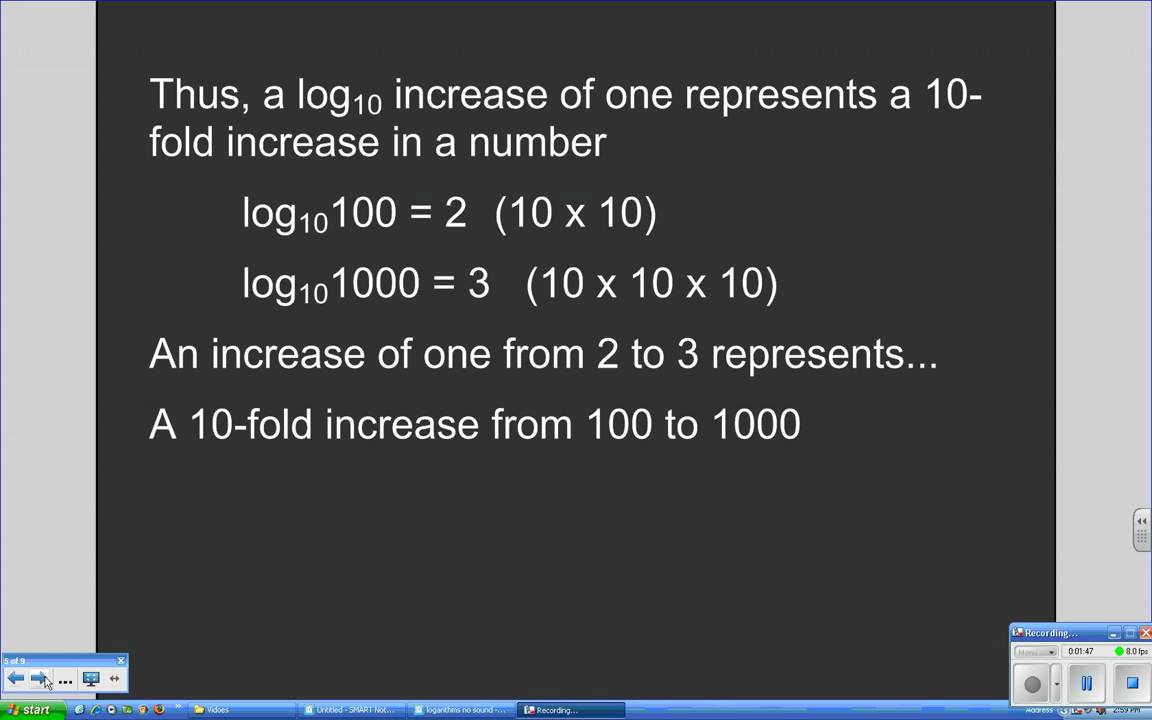Definisi Logaritma dan Contoh soal
Summary
TLDRThis video explains the concept of logarithms, their relationship with exponents, and how to convert between the two forms. It introduces the general form of logarithms, demonstrates examples of exponent-to-logarithmic conversions, and highlights the connection between roots and logarithms. Key examples include base conversions and handling negative exponents. The video also covers properties and special cases of logarithms, like logarithms of 10 and fractional exponents, with the aim of helping viewers understand how logarithmic and exponential functions relate in real-world problems.
Takeaways
- 😀 Logarithms are the inverse or opposite of exponents. They help us find the exponent in an equation where the base and result are known.
- 😀 The general form of a logarithm is written as log_b = n, where 'a' is the base, 'n' is the exponent, and 'b' is the result.
- 😀 The relationship between exponent and logarithmic forms: an exponent form like a^n = b can be converted into a logarithmic form: log_b = n.
- 😀 In logarithmic form, the exponent is the value being sought, while the base and result are provided.
- 😀 A logarithm helps to find the exponent, while an exponent form seeks the result.
- 😀 Logarithms can be used to convert root forms to exponential forms and vice versa. For example, the cube root of a number is the same as raising the number to the power of 1/3.
- 😀 Negative exponents result in fractions. For example, 3^(-2) = 1/9, and this can be converted to logarithmic form.
- 😀 Negative bases in exponent forms will result in negative values, while even exponents result in positive values.
- 😀 The logarithmic form can be used to solve equations where the base and result are given, and the exponent needs to be found.
- 😀 Logarithmic values like log(10) = 1 and log(1000) = 3 are used to understand the power of 10 and help convert between different exponential forms.
- 😀 Logarithms can also be simplified using properties like changing bases or powers to help solve complex problems. For example, log(36) can be broken down into simpler logarithmic forms like log(6^2).
Q & A
What is the definition of a logarithm?
-A logarithm is the inverse of an exponent. It represents the opposite operation of raising a number to a power.
What is the general form of a logarithmic equation?
-The general form of a logarithmic equation is log_b(a) = n, where 'b' is the base number, 'a' is the result, and 'n' is the exponent.
How does the logarithmic form relate to the exponential form?
-The exponential form is a^n = b, where 'a' is the base, 'n' is the exponent, and 'b' is the result. This can be converted into logarithmic form as log_b(a) = n.
What is the difference between logarithmic and exponential forms in terms of what is being sought?
-In exponential form, we are looking for the result of raising the base to a power (a^n = b). In logarithmic form, we are looking for the exponent (log_b(a) = n).
How can we convert an exponential form to a logarithmic form?
-To convert an exponential form like a^n = b to a logarithmic form, we rewrite it as log_b(a) = n.
What is the relationship between roots and logarithms?
-Roots can be represented in logarithmic form by finding the base number. For example, the nth root of a number can be expressed as log_b(a) = n, where 'b' is the base and 'a' is the result.
How do we change an exponent form like 7^3 = 343 into logarithmic form?
-To change 7^3 = 343 into logarithmic form, we write it as log_7(343) = 3, indicating that 7 raised to the power of 3 equals 343.
How does a negative exponent affect the result when converting to logarithmic form?
-A negative exponent results in a fractional value. For example, 3^-2 = 1/9, and when converted to logarithmic form, it becomes log_3(1/9) = -2.
How do we handle negative base numbers in exponential and logarithmic forms?
-When the base number is negative, the result can be negative if the exponent is odd. For example, (-5)^3 = -125. The logarithmic form is written as log_(-5)(-125) = 3.
What is the purpose of properties like log_b(m * n) = log_b(m) + log_b(n)?
-This property allows us to break down complex logarithmic expressions into simpler ones by converting multiplication into addition. It is useful in solving logarithmic problems more efficiently.
Outlines

This section is available to paid users only. Please upgrade to access this part.
Upgrade NowMindmap

This section is available to paid users only. Please upgrade to access this part.
Upgrade NowKeywords

This section is available to paid users only. Please upgrade to access this part.
Upgrade NowHighlights

This section is available to paid users only. Please upgrade to access this part.
Upgrade NowTranscripts

This section is available to paid users only. Please upgrade to access this part.
Upgrade Now5.0 / 5 (0 votes)





